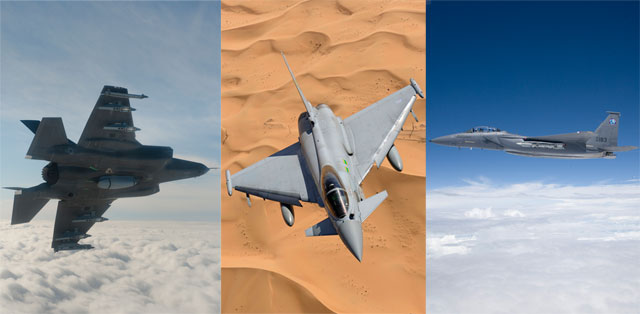Seoul’s decision to re-tender the F-X III competition for 60 fighters raises questions about the viability of a revised process, and greatly enhances the Lockheed Martin F-35’s chances of securing the deal.
After announcing its decision not to move forward with an F-15 Silent Eagle acquisition, Seoul’s Defense Acquisition Program Administration (DAPA) has yet to clarify how it plans to replace the South Korean air force’s McDonnell Douglas F-4 Phantoms and Northrop F-5s.
In an email to Flightglobal, Boeing was quick to register its dismay at Seoul’s announcement.
“Boeing is deeply disappointed by the Republic of Korea’s Defense Acquisition Program Executive Committee decision,” says the US airframer. “Boeing has rigorously followed the Defense Acquisition Program Administration’s instructions throughout the entire process. We await details from DAPA on its basis for the delay while evaluating our next options.”
The F-15SE had been widely tipped as the winner of the competition from July, when it was announced that it was the only aircraft to come in below DAPA’s budget of won (W) 8.3 trillion ($7.7 billion). This effectively eliminated its other rivals in the competition: the Eurofighter Typhoon and F-35.
Several factors appear to be behind Seoul’s decision, the foremost being the air force’s desire for an aircraft optimised for stealth. The air force’s original required operational capabilities (ROC) had stealth as a cornerstone requirement.
DAPA, however, chose to reduce the emphasis on stealth in the competition, creating an opportunity for two non-stealthy aircraft – the F-15 and Typhoon – to make competitive bids.
With the F-15SE, Boeing sought to bridge the gap between stealthy and non-stealthy aircraft. The proposed variant of the venerable F-15 include several low observable features, such as conformal weapons bays, canted tails and the use of radar absorbent materials.

It argued that stealth only plays a role in the early days of a conflict. After the suppression of enemy air defences, the F-15SE could be converted into a hard-hitting “bomb truck", thus taking advantage of the F-15’s heavy payload capabilities. In addition, Seoul already operates 60 F-15K Slam Eagles, which were obtained under the F-X I & II requirements.
In early August, the F-15SE’s position looked strong. “We’re getting a really good feeling about Korea,” said a Boeing official.
Nonetheless, trouble was brewing. In mid-August, DAPA reached out to Lockheed Martin for more information on F-35 pricing. Lockheed’s offer in F-X III was based on pricing for Low Rate Initial Production lot 5 (LRIP 5) aircraft. In a re-tendered competition, Lockheed will be able to use updated pricing from LRIP 7 or perhaps LRIP 8, lots in which the unit cost per aircraft will have fallen, perhaps by 10-12% from LRIP 5.
Meanwhile, South Korean media published numerous stories critical of the Silent Eagle decision.
Then, in early September with the F-15SE still apparently poised to win, 15 former air force chiefs issued a letter opposing the selection of the aircraft. Several of these former officers had played a role in devising the air force’s original ROC, which placed a significant emphasis on stealth.
“Some of these guys were involved in Seoul’s original decision to buy the F-15K,” says an industry source in Seoul. “It’s not as if they are completely against the F-15.”
Although both companies are doubtless exploring their options, some sense of their intentions will be apparent in their presence at next month’s Seoul International Aerospace & Defence Exhibition. At the Seoul air show in 2011, Lockheed Martin, Eurofighter, and Boeing all boasted a significant presence, including large stands with cockpit simulators.
DAPA says it will review the F-X III campaign thoroughly before issuing a new request for proposal`, with the goal of choosing a winner within a year. The big question is whether Eurofighter and especially Boeing will be inclined to participate in a revised competition.
The air force could also step in and change the nature of the requirement, possibly reducing the number of aircraft, buying two different types of aircraft, or increasing the budget.
South Korean officials have said the decision to re-tender F-X III was made based on the threat posed by North Korea as well as the imminent arrival of stealth aircraft in neighbouring countries such as Japan, which in 2011 decided to buy 42 F-35s, and China, which is developing the Chengdu J-20 and Shenyang J-31.
The first excuse is dubious given the ramshackle state of North Korea’s air force. The second excuse is less so in a region where status counts for a great deal. Irrespective of Seoul’s reasons for choosing to re-tender F-X III, it will have a hard time making it look like a genuine and fair competition.
Source: FlightGlobal.com
















